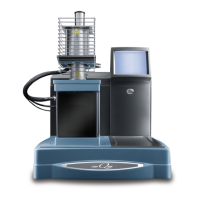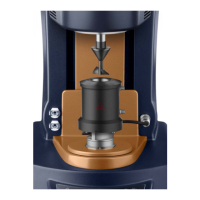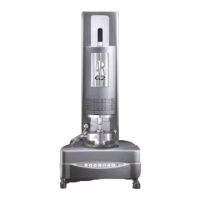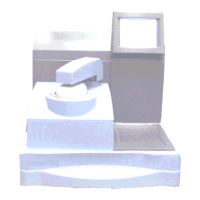Appendix B
B–28 TA I
NSTRUMENTS
TGA 2950
component (e.g., CO
2
from oxidizing carbon).
Molecular attractions prevent a more volatile
component from evolving when expected, and at
the same time hasten the evolution of another
less volatile component (e.g., chain linkage in
polymer blends). The physical matrix of the
mixture may retard the evolution of a more
volatile component, which then evolves at a
higher than normal temperature and at a slower
than normal rate (e.g., oil evaporating from
rubber). Or the components may react chemi-
cally at elevated temperatures and produce new
compounds which decompose at different
temperatures than the individual components.
Sample Quantity
and Orientation
As with conventional constant heating rate
TGA, sample quantity and orientation in the
sample holder can be important during Hi-Res
experiments. This is particularly true if the
sample is not homogeneous (e.g., a laminated
sheet or coated surface). With these types of
samples it is wise to try scans with different
surfaces exposed. Be aware that chopping or
grinding the material may produce an entirely
different result since physical or chemical
properties may be altered.
Exposed Surface Area
Exposed surface area is often important. When
samples melt they usually spread out over the
bottom surface of the sample container. This
will expose more or less surface area, depending
on whether the original configuration was a
single block (area typically increases) or a

